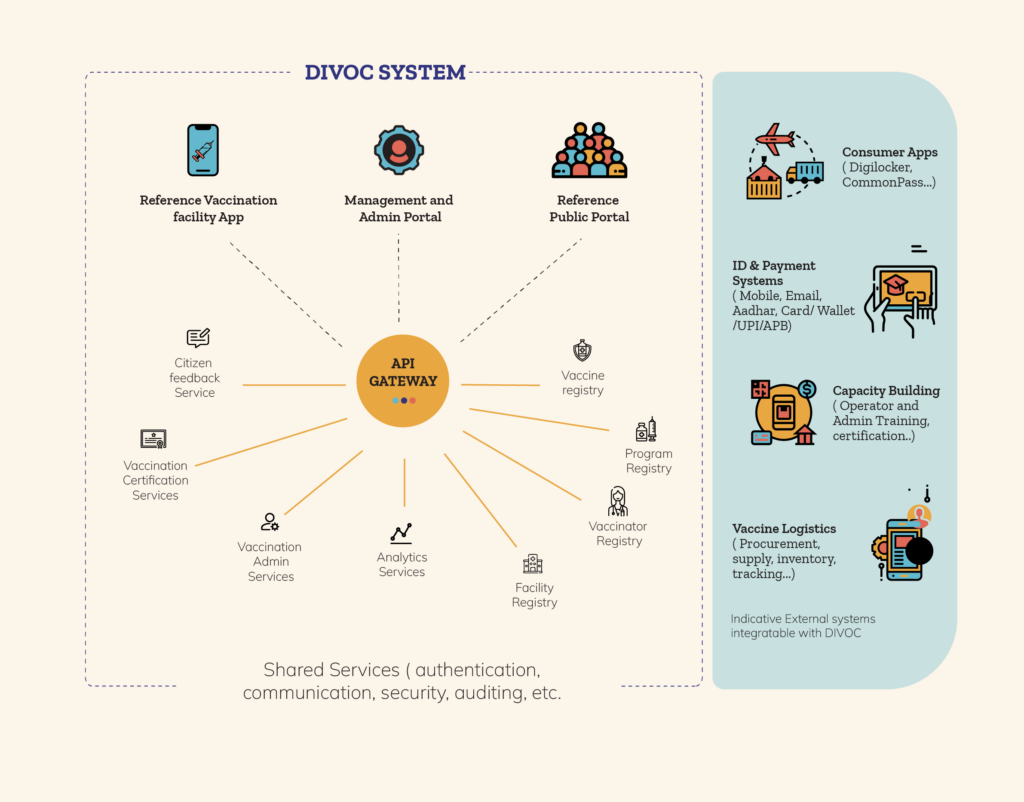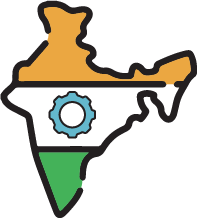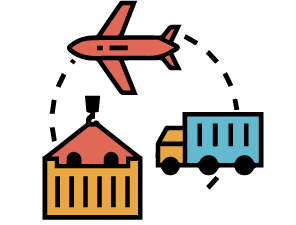
DIVOC evolved at the time of COVID-19 outbreak in India to address the challenge of managing public vaccination programs for a huge population. The platform generates, distributes and verifies proof of vaccination for a population.
Usually, any large-scale vaccination program has the following 3 key components:
- The supply chain entails logistics, storage, distribution, availability, etc.
- Capacity building for on-ground support that would include trained front-line health personnel.
- Rollout and certification followed by continuous monitoring and feedback cycles.
While there may be options for the first two components, most countries lack any kind of digital infrastructure for supporting rollout and certification. This is where DIVOC plays a vital role in helping countries move from traditional paper-based systems to a new-age digital system.
The platform has been active since January 2021 and its modules continue to be used across India, Indonesia, Jamaica, Philippines and Sri Lanka. As a Digital Public Good (DPG), DIVOC is recognized by 120 countries globally.

DIVOC, a Digital Public Good (DPG,) was built as an open-source technology to create a free-to-use orchestration platform for driving efficient management of public healthcare programs. It has 3 key modules that can be used independently or integrated with other external systems.
- Orchestration Module — this captures details about the vaccine, healthcare facilities, vaccinators and, recipients and matching time availability across facilities to potential recipients. The dynamic data-driven orchestration is primarily possible due to –
- Registries and Control Parameters are used to define the actors (who) and the activity (where and when) involved in the program.
- Telemetry-driven analytics provide real-time observability of what is happening on the ground.
- Operational and Effectiveness Feedback enables improvement and redefines the control parameters in the first point.
- Certification Module — this generates the digitally verifiable certificate based on the details captured from the Orchestration Module. The digital certificate is designed to
- Conform to WHO guidelines which are based on the W3C credential specification.
- Verify authenticity of the certificate via a digitally signed QR code.
- Be available to citizens either on their smartphones or as a printable version of the same (for those without smartphones).
- Support multilingual templates.
- Integrate with health lockers or other digital certificate lockers.
- Facilitate easy distribution of certificates via various channels.
- Receive feedback from citizens using a one-click link via the QR code.
- Provide a one-click mechanism via the QR code to manage the distribution of authentic information.
- Feedback Module — this allows recipients of the vaccine to provide one-click immediate feedback and receive authentic preliminary information and guidance based on the symptoms.
Since DIVOC is used by a diverse set of individuals across socio-economic strata from varying countries, the user experience has been designed to keep it very simple and intuitive. The user experience with DIVOC is at 3 levels –

Country-level Administration experiences complete flexibility as the modular architecture of DIVOC allows decision makers to pick only those modules that are relevant to their design and the “plug and play” concept enables immediate use of the module (without worrying about trainings and set up).

Healthcare Professionals and facilities experience ease of orchestration. Highly configurable and designed to cater to the diverse use cases in terms of choice of facility (Government / private facilities) at various geographies within the country, choice of payment (Govt/employers/other funds/individuals paying), choice of IDs (digital IDs, mobile numbers, no IDs), etc.

Individuals experience empowerment as they could, for the first time, download (multiple times and using multiple options) their health record which gave them access to travel, work premises. The multi-modality (paper and digital distribution modes) and multilingual options further added to the flavor of relevance across socio-economic and geographical diversities for every individual.
Within a country, the verifiable open credentialing component has supported communities at all levels without creating or widening the digital divide (usually the side effect of Digital technology on the underserved or underrepresented communities). The platform allows citizens to travel with verifiable certificates, which has, in the past, contributed to the reduction of the spread of Covid-19 by restricting unauthorized travel. The paper certificates with the digitally signed QR code are the equivalent of digital certificates on devices. The certificates can be verified offline and hence, successfully bridge the gap in geographical areas with better or no internet access.
The platform has issued an astonishing 2.2 billion Verifiable Certificates – nearly every 5th person on this planet holds a DIVOC VC!



